October 4, 2022
Making more than a home in The House Next Door

Single mothers pursuing their education live in The House Next Door along with their children.
A nonprofit ministry in Idaho houses single moms rent-free while they pursue their education.
When the house next door to the parish hall of Grace Episcopal Church came up for sale, it created the opportunity for more than a real estate transaction.
The Rev. Karen Hunter, the vicar of the Nampa, Idaho, parish, had already recognized the need for a local ministry to help support single mothers. With buy-in— both financial and philosophical — from the right people, she believed that the unassuming building could help them serve a new set of neighbors.

Although the church had owned the property once before, when Hunter and other members of the congregation went to take a look, they discovered a much larger floor plan than they’d realized. Knowing that Grace could not afford to buy the house outright on its own, Hunter reached out to her sister and brother-in-law and pitched them on the purchase with the hope that the church would pay them back eventually.
They agreed, and the plan was discussed further at a congregational meeting.
“There were a number of people who surprised me in being supportive, because something like this is a big undertaking,” Hunter said. “We had so many people who had experienced being single moms, or had people close to them who were, I think it really resonated. It was clear that this was a time in people’s lives when assistance is really important.”
With an eye to housing families led by single mothers who were pursuing their education, the parish established a committee and a board, both of which got to work. The planning for what would be aptly named The House Next Door began in earnest, with next steps that would be familiar to any housing nonprofit: applying for 501(c)(3) status, hiring staff members, bringing in furniture along with the bits and pieces of daily life that would make the empty house a home.
What resources to address a problem are so close that you might have overlooked them? If those resources seem unattainable, what are some creative options to overcome those hurdles?
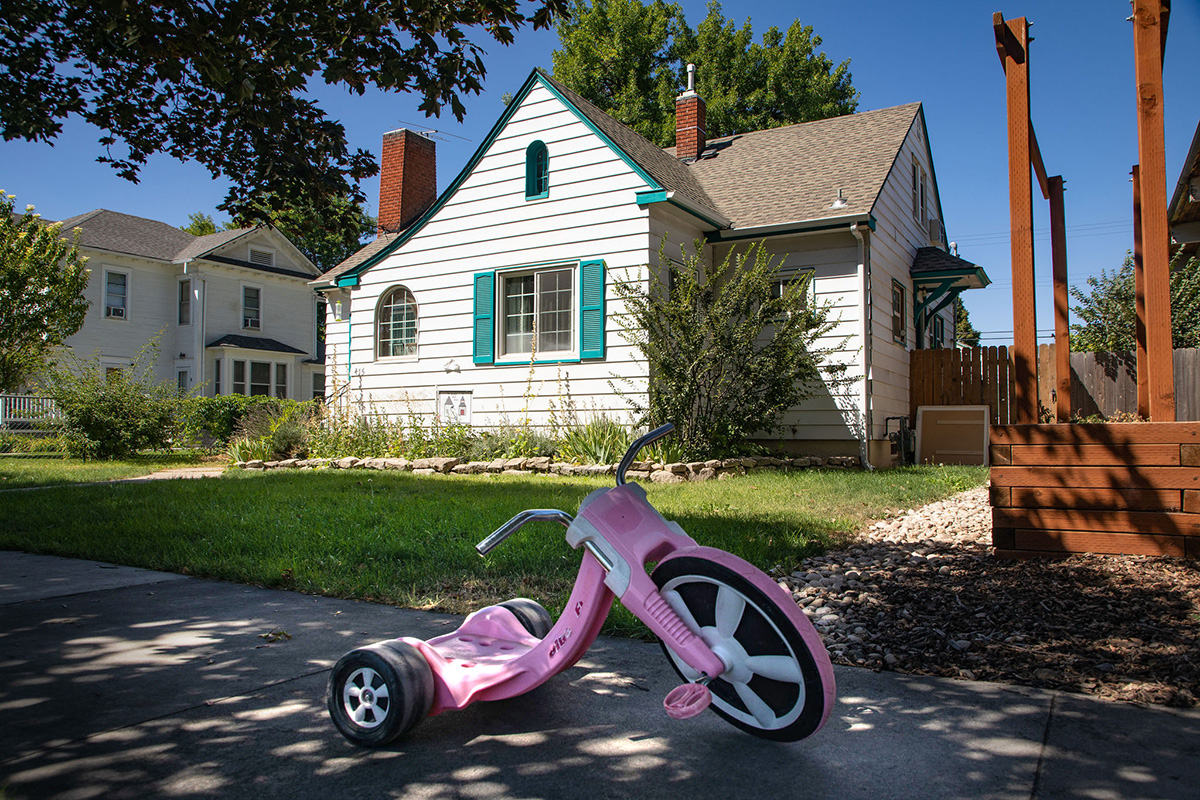
Learning as they go
The House Next Door went on to open in 2015 and has since provided rent-free housing for 16 mothers and 27 children, five of them born while their families were in residence. The qualifications and application process have evolved over the last seven years, mostly in response to new information and unexpected considerations, including deciding what qualifies as pursuing an education.
One of the first residents was pursuing her GED diploma rather than a college degree, as had been stipulated. In response, that requirement was broadened to include any kind of education — from GED studies to heating, ventilating and air conditioning (HVAC) training to an apprenticeship with builders to learn how to frame houses.
Nampa, with a population of roughly 100,000, is located 20 miles west of the state capital of Boise. The city is home to the annual Snake River Stampede Rodeo, abundant parks and walkways, and other attractions. It is also among those municipalities faced with a growing need for affordable housing. For single parents trying to improve their families’ circumstances through education, housing insecurity is an additional burden.
Meredith Greif, an assistant research professor of sociology at Johns Hopkins University, said that supporting housing stability and parental education benefits families and communities.
“Anything that can be done to help people to advance their education is going to go a long way in terms of their ability to gain jobs that are helpful to their families, income they earn and, similarly, the housing they’re able to secure,” said Greif, whose research focuses on race, space and housing.
“Kids will 100% only benefit from that, from the stable environment their parents provide,” she said. “Parents are best equipped to be supportive of their own kids when they, too, are in a mentally stable place, when they perceive their quality of life to be good and they’re satisfied with their environment. Having parents feel good about themselves and feel engaged in the world and confident only is going to spill over to their kids.”
How do you respond when realities shift and your expectations for a project need to change? How might you reframe those changes as opportunities?
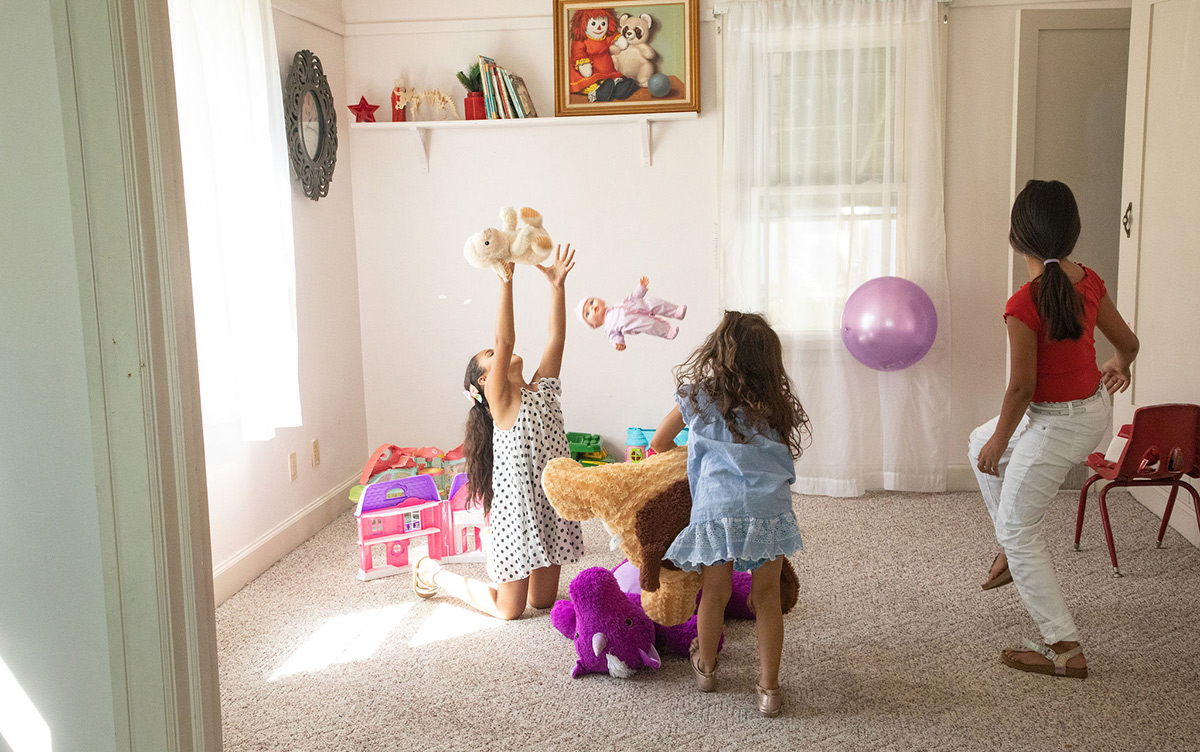
The application process for living at THND includes a list of general criteria: mothers must be 18 or older or legally emancipated; they must be enrolled in educational programming at least part time and be working toward a degree or certification; and they must maintain a minimum 2.0 GPA.
All residents must also agree to abide by the list of house rules, which include no smoking, no drugs or alcohol, and no overnight guests. Mothers with a prior history of addiction must be in recovery for a minimum of six months prior to applying.
Living in the house
The 1930s-era house blends into the neighborhood, with only a small yard sign displaying THND’s name and logo.
Thanks to a donor, the house’s interior and exterior have just received a fresh coat of paint —bright white inside and out, with teal accents and shutters.
In addition to the four bedrooms and three bathrooms split between three stories, there is a kitchen, dining room, living room, study room and separate playroom. Amenities include a washer and dryer, Wi-Fi, and a large backyard with a patio, storage space, a playground, and an aboveground pool.
Two mothers residing in the house recently spoke about what the experience has meant for them. (The mothers requested that their last names not be used.)
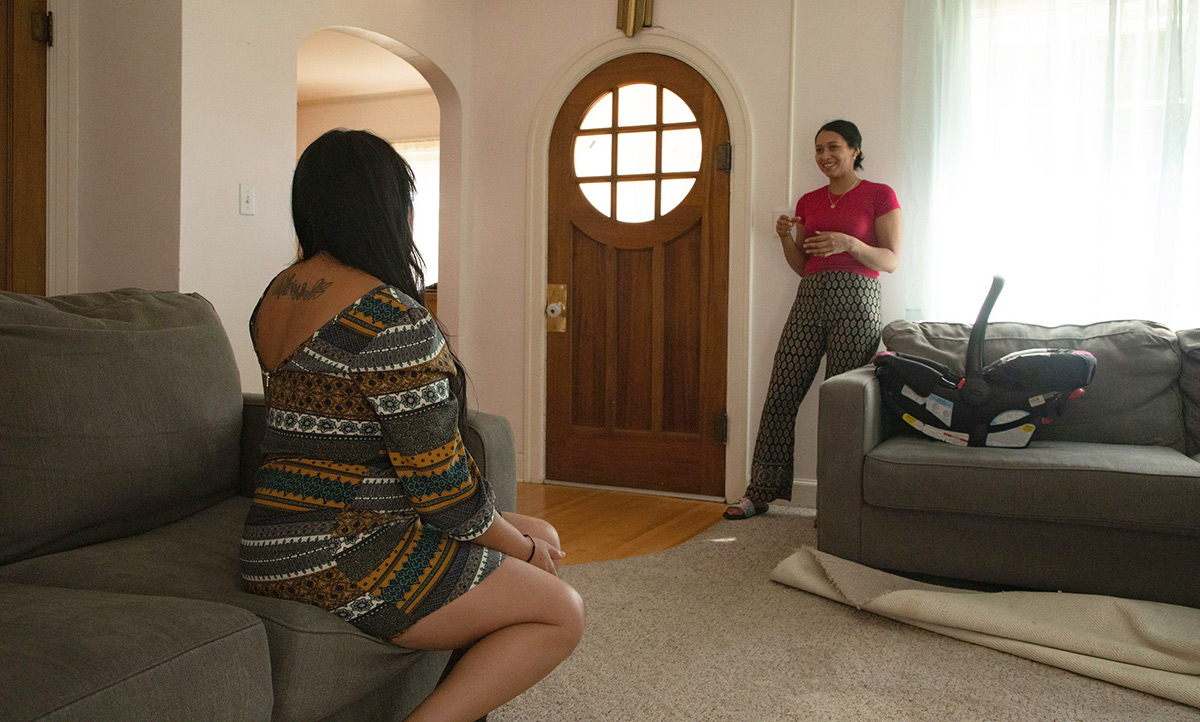
Carolina, 26, has three daughters, ages 2, 7 and 9. Originally from Honduras, Carolina speaks Spanish as her first language, and her interview was conducted through a translator.
She heard about THND through pastors in a church where she and her family had been in a shelter, and they helped her connect. Her family moved into the home in early December 2021, and she has been working on English classes and getting her GED certificate since then.
Jamilet, also from Honduras, learned about THND from Carolina through their work harvesting grapes. She is 22 with a 1-year-old and a 6-year-old. Before moving into THND in early February, Jamilet and her children were living in her aunt’s living room. She already has her GED diploma and is taking English classes so she can attend college and pursue a career in nursing.
Jamilet said she feels safe and at peace living with her daughters at THND. She is glad the people there are helping her succeed. She also said it was challenging at first to establish a routine in the house between school, working, taking care of the kids and other responsibilities but that she feels more established in the home now.
The communal living established by THND is intentional, as it means more help with child care, house cleaning and general support. All are important factors while trying to juggle school and single parenthood. Each family pays $80 per month toward its share of the utilities and other necessities of the house. Residents also cover their own costs for food, insurance and personal expenses.
Building supportive relationships
When have you been surprised by someone’s generosity, compassion or empathy? How can that shape your vision for what is possible?
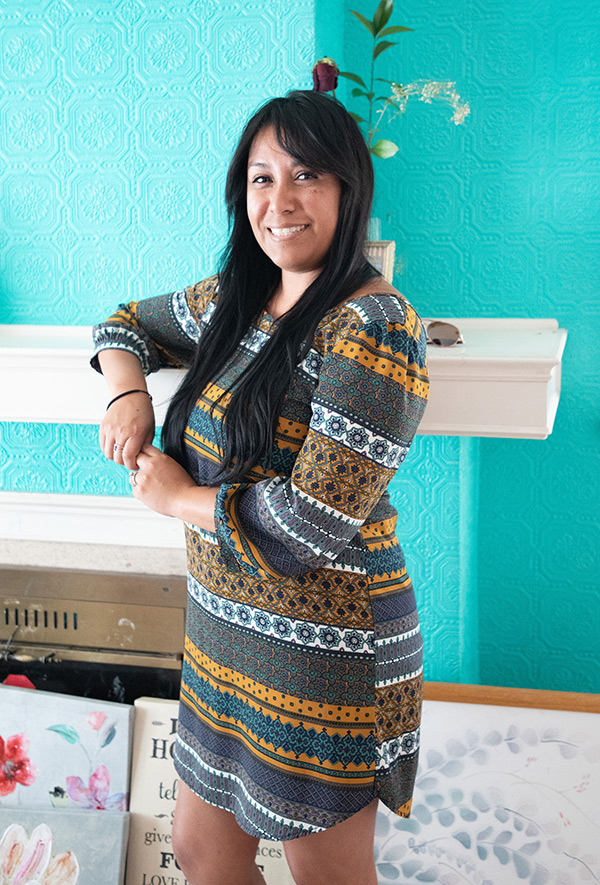
Melinda Romayor, who became THND’s new executive director in March 2022, has a background in advocacy against sexual violence through the Women’s and Children’s Alliance. She has almost a decade of experience running shelters and advocating for clients, a background that is useful for leading the work of The House Next Door. While THND is not a shelter for women affected by domestic violence, many who stay there have had similarly traumatic experiences.
Romayor’s arrival came during a time of staff turnover, in both the executive director and the house manager position.
“There was a lot of change for the residents in terms of someone checking in,” Romayor said. “They were used to just living there, doing their thing and not really being supported.”
Romayor has been working to change that relationship, visiting with the women and helping them utilize all the resources THND has that they might not have been taking advantage of before. She has also been working to get the community more involved in opportunities for engagement, like sponsoring a room or a service project, such as the recent house painting, so that more people feel a part of THND and its success.
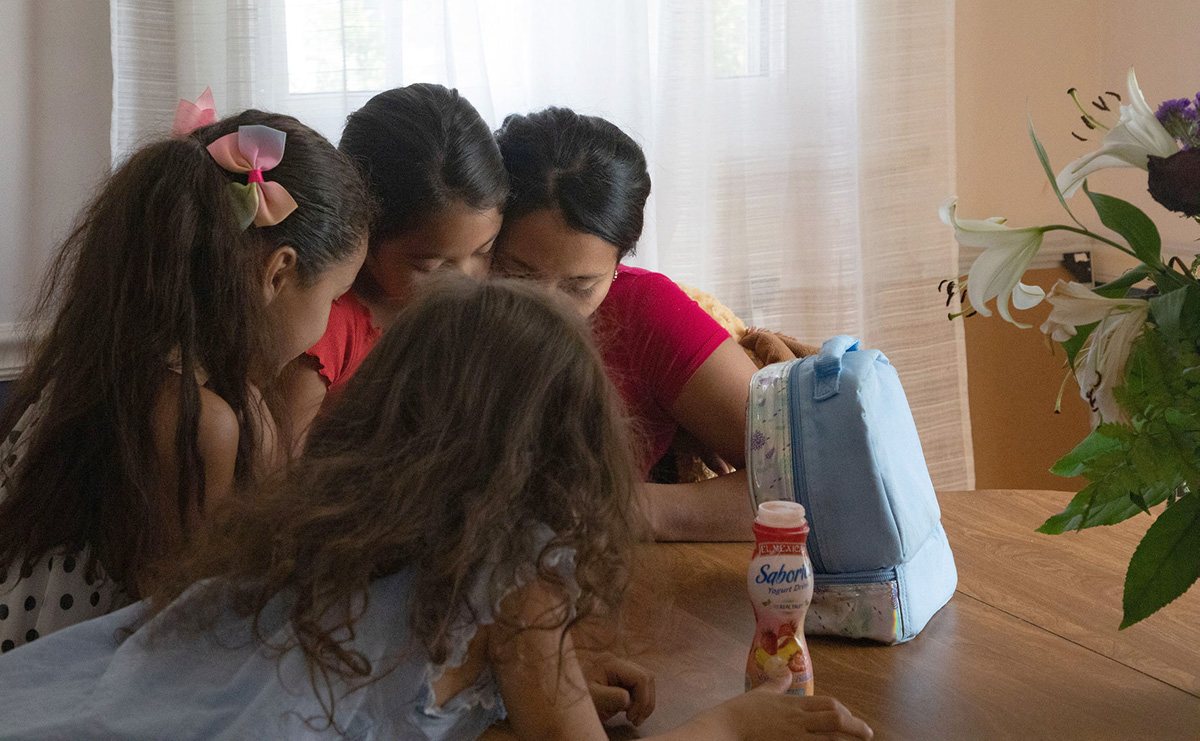
Each project done to renovate and upgrade THND — from replacing the 80-year-old original windows in 2016 to renovating the downstairs after a flood in 2017 to installing a new HVAC system in 2020 — has been through the support of volunteers, donors and grant money.
Grace Church has managed to secure funds for THND through a variety of endeavors, including a social enterprise to make priest’s stoles and annual fundraisers, together with donations and grants.
The organization’s budget goes primarily to maintenance of the house, Romayor’s and the house manager’s salaries, insurance, and the mortgage. They rely heavily on volunteers for supportive roles, especially for babysitting. Then there are the little things throughout the year that don’t necessarily cost that much but have a big impact, such as gift cards for the residents on their birthdays.
There seems to be a natural rhythm to those coming and going from THND; there have been a few times when someone was wait-listed, but typically, as one woman moves out, another happens to apply. Grace Church and THND have received many requests over the years to open a house for single fathers. But for now, given the price of real estate in the area and the need to finish paying for the current house, the focus remains on the small home in Nampa, making a difference in single moms’ lives.
Who are the people you need to bring on board for your next big project? What are some ways you can contribute to a larger endeavor in your community without being the one in charge?
Questions to consider
- What resources to address a problem are so close that you might have overlooked them? If those resources seem unattainable, what are some creative options to overcome those hurdles?
- How do you respond when realities shift and your expectations for a project need to change? How might you reframe those changes as opportunities?
- When have you been surprised by someone’s generosity, compassion or empathy? How can that shape your vision for what is possible?
- Who are the people you need to bring on board for your next big project? What are some ways you can contribute to a larger endeavor in your community without being the one in charge?



Share